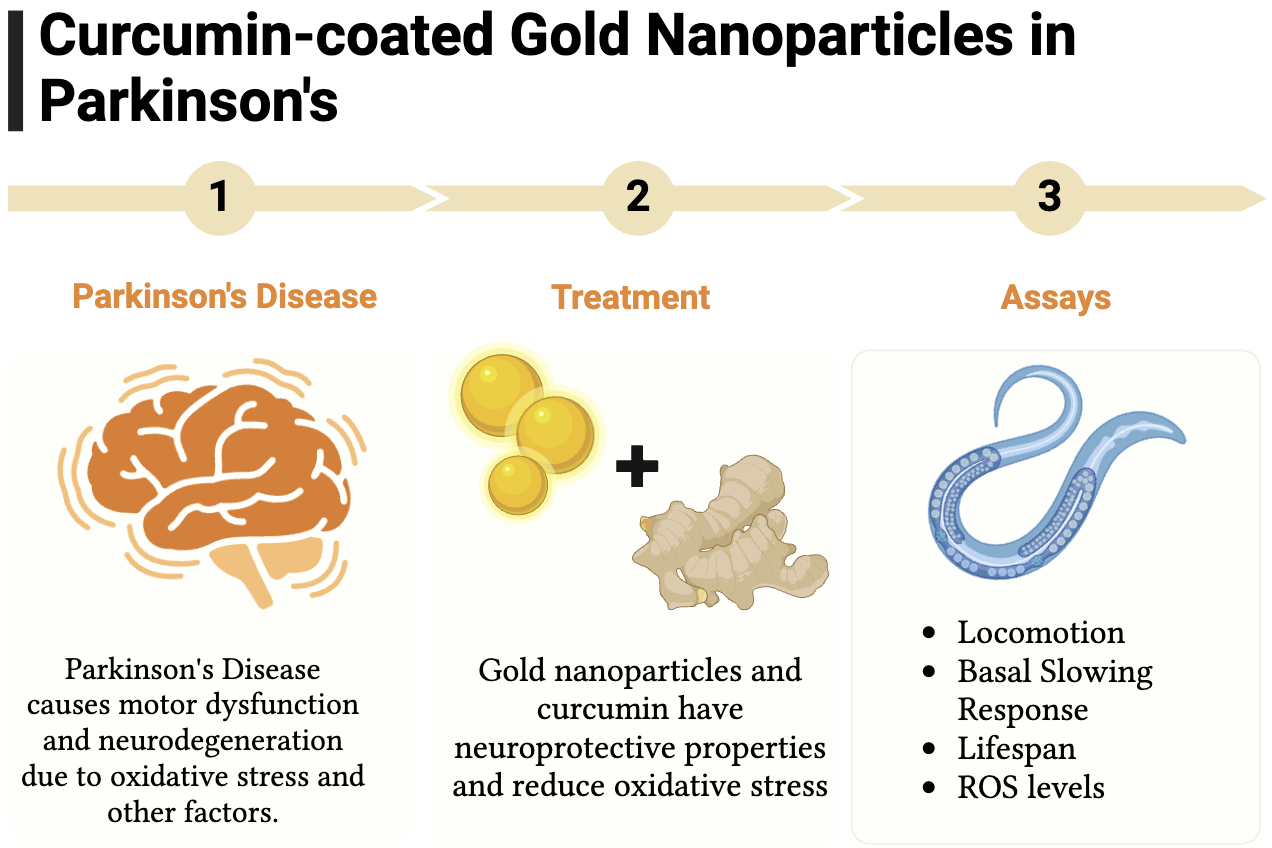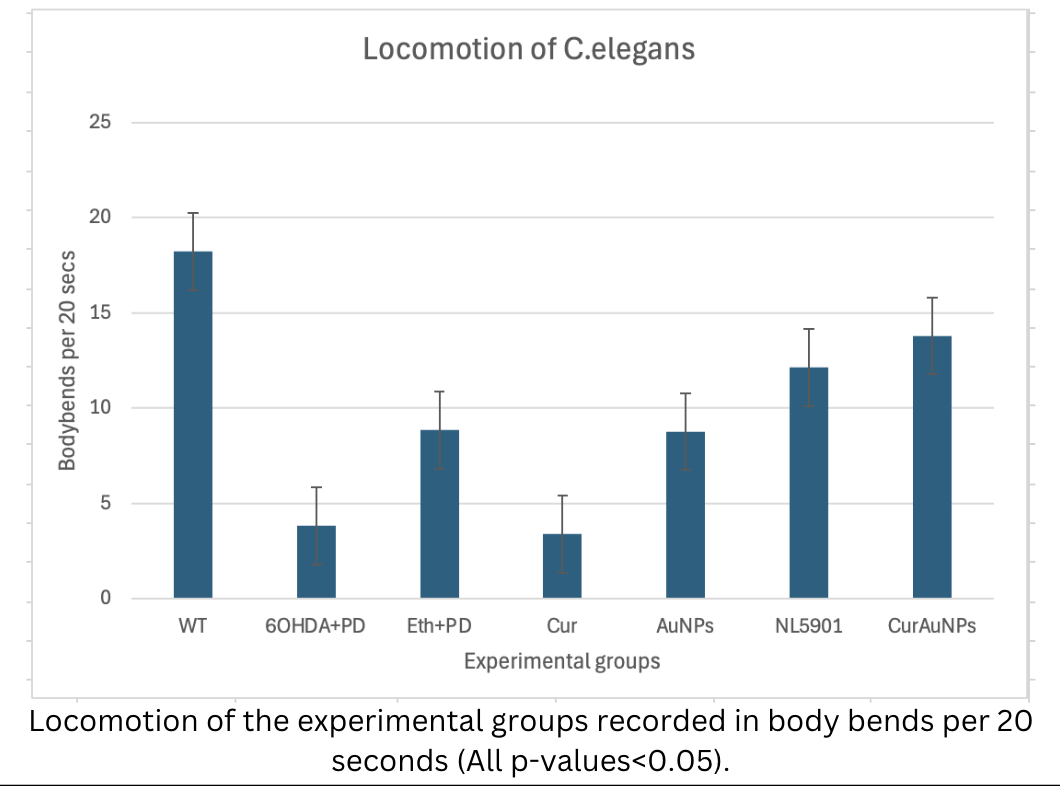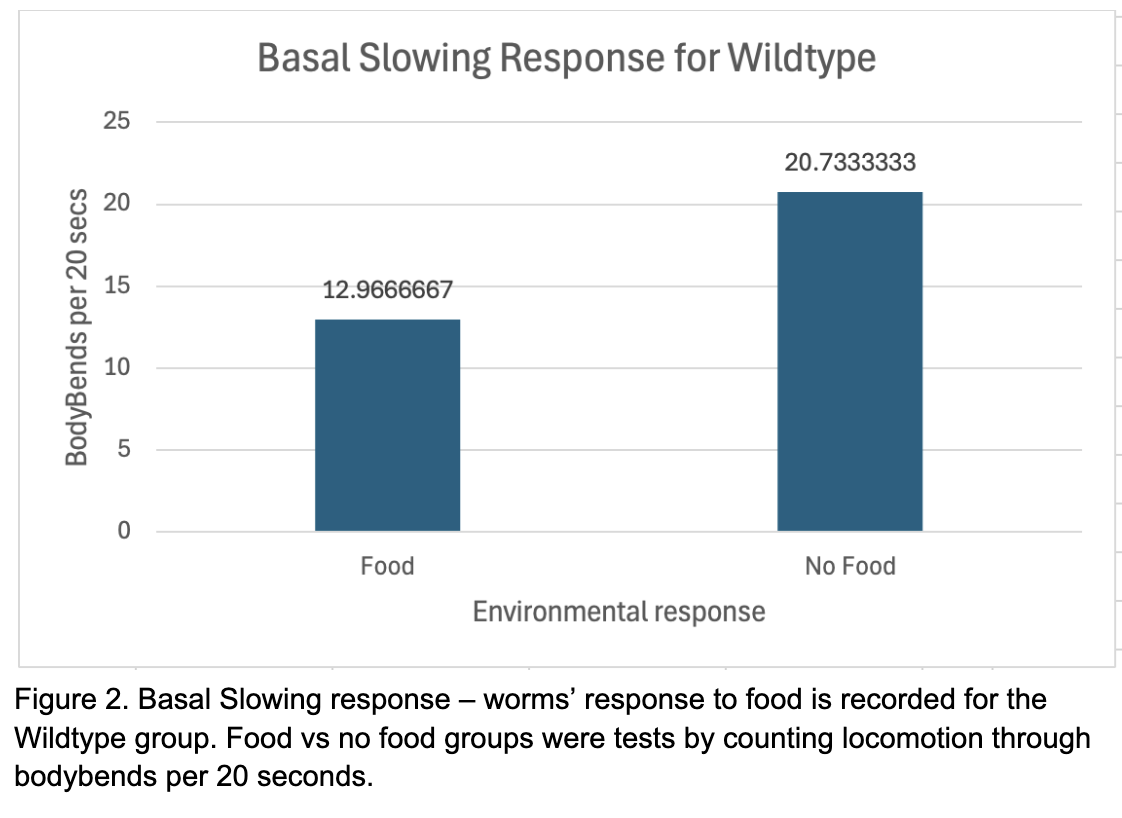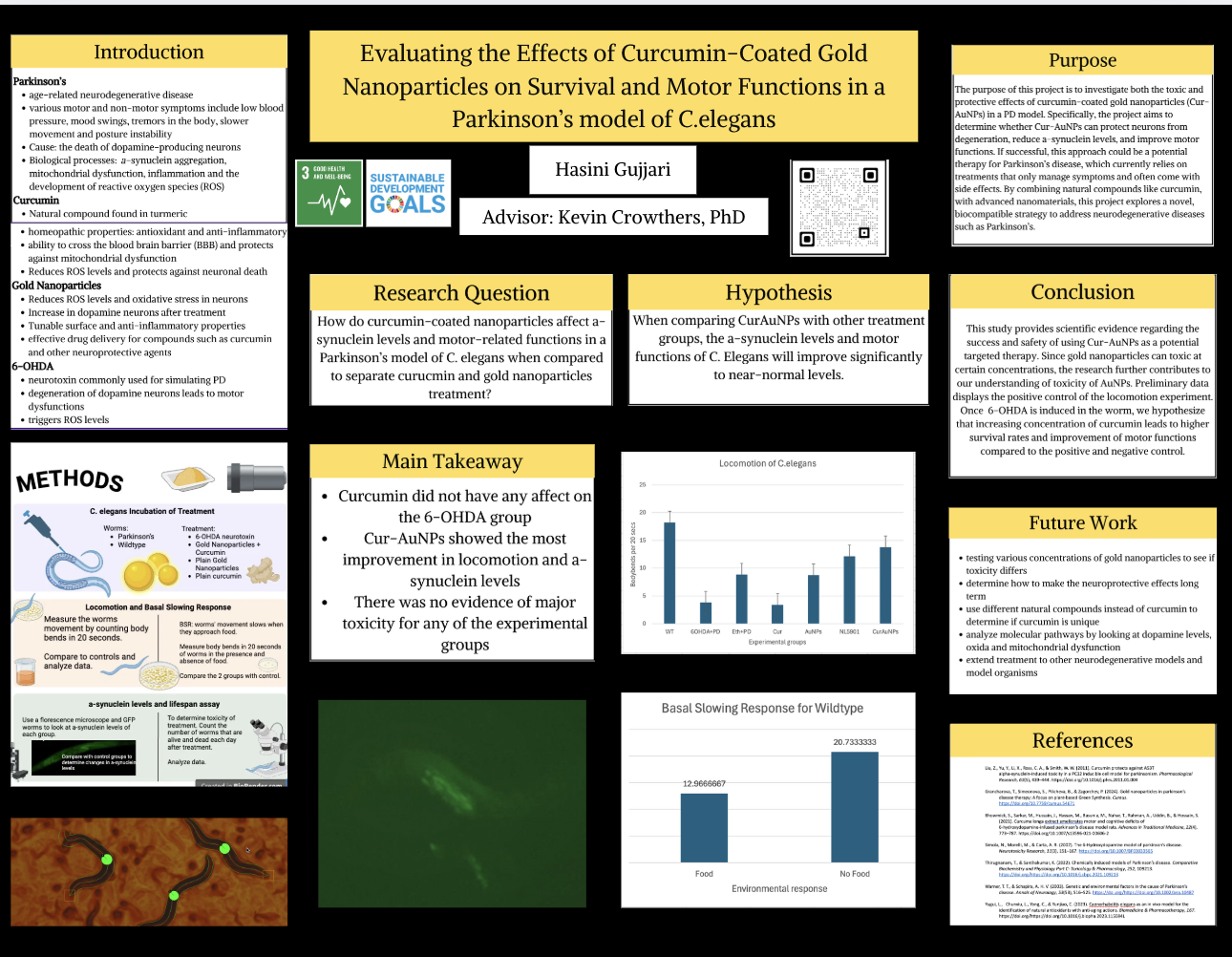STEM I with Science and Technical Writing at Mass Academy is taught by Dr.Crowthers. During the first 6 months of this class, students get to partake in an independent research project that they will present at the MAMS Science fair. I learned how to brainstorm ideas, write a thesis, and collect data. I chose to work in the Mass Academy lab to investigate Parkinson's disease on C. elegans. Scroll down to learn more about my project!
Evaluating the Effects of Curcumin-Coated Gold Nanoparticles on Survival and Motor Functions in a Parkinson’s C. elegans Model

Parkinson’s disease is a neurodegenerative disease that is caused by the death of dopamine neurons and a-synuclein protein aggregation. PD’s neurodegeneration is characterized by motor and non-motor defects, which worsen as the disease progresses. Although there are currently individual treatments synthesized for the symptoms of Parkinson’s such as Levodopa, the drugs have several side effects and wear off easily. The present study utilizes the synthesis of gold nanoparticles and curcumin to explore their neuroprotective effects on a Parkinson’s model of Caenorhabditis elegans. Curcumin and gold nanoparticles were chosen for their neuroprotective properties and their ability to reduce oxidative stress, along with their efficient drug delivery across the BBB. In our study, we used the model organism C. elegans N2 Wildtype and NL5901 Parkinson’s strain. To further simulate oxidative stress and neurodegeneration, the neurotoxin 6-OHDA is exposed to the Parkinson’s model. This study examines the effects of curcumin-coated gold nanoparticles on locomotion, basal slowing response, lifespan and oxidative stress of the nematodes, and compares the results with the control groups of the Wildtype and 6-OHDA-induced Parkinson’s model. The expected results are that the locomotion of the Parkinsonian C. elegans will recover by 45% after Cur-AuNPs treatment in body bends. In addition, the average speed of the worms for the basal slowing response assay will improve by 60% when comparing the treatment groups with the control. The ROS levels will be reduced, demonstrating the therapeutic potential of Cur-AuNPs in alleviating Parkinson’s associated neurotoxicity.
Key words: Parkinson’s disease, neurotoxicity, curcumin, gold nanoparticles, locomotion, basal slowing response, oxidative stress, lifespan
Supporting Documents
Click here to view my supporting documents.
How do curcumin-coated nanoparticles effect worm behavior and alpha-synuclein levels of 6-OHDA-induced Parkinson’s model of C. elegans when compared to curcumin and gold nanoparticle treatment?
It is hypothesized that curcumin-coated gold nanoparticles recovers the locomotion, basal slowing response and alpha-synclein levels of the PD works to near-normal levels. Additionally, 20nm gold nanoparticles will be non-toxic to the worms.
Background
Methodology


Analysis
Discussion
References
Poster
